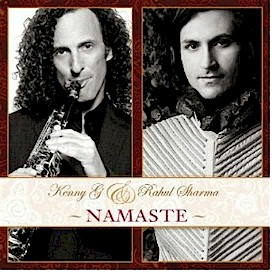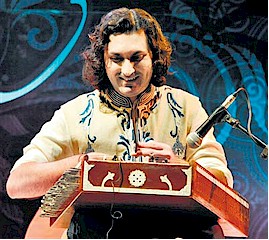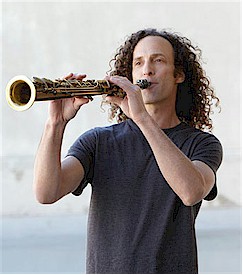 It has occurred to me from time to time, for purposes both spiritual and financial, to start my own religion. My late uncle did this once, on a lark; his was called the Church of Flat. Its doctrine was simple—Columbus was wrong. The earth is indeed flat, all scientific and photographic proof to the contrary. The center of the world is located approximately in Edison, NJ; it extends west as far as Hawaii, and east as far as Long Beach Island and a goodly portion of the Atlantic Ocean (I know, that makes the center of the world extremely off-center. He didn’t care). Travel too far in either direction, and off you go, tumbling into who-knows-what. There were a number of sacraments and practices in the CoF (which we would refer to by coughing lightly), most of which involved adults fondling one another accidentally, usually in the kitchen. I was too young to take part in such practices, so, in recompense, I was made a saint. No miracles required. Our hymnals had but one song in them, if I recall correctly. That song was “Paradise by the Dashboard Light.”
It has occurred to me from time to time, for purposes both spiritual and financial, to start my own religion. My late uncle did this once, on a lark; his was called the Church of Flat. Its doctrine was simple—Columbus was wrong. The earth is indeed flat, all scientific and photographic proof to the contrary. The center of the world is located approximately in Edison, NJ; it extends west as far as Hawaii, and east as far as Long Beach Island and a goodly portion of the Atlantic Ocean (I know, that makes the center of the world extremely off-center. He didn’t care). Travel too far in either direction, and off you go, tumbling into who-knows-what. There were a number of sacraments and practices in the CoF (which we would refer to by coughing lightly), most of which involved adults fondling one another accidentally, usually in the kitchen. I was too young to take part in such practices, so, in recompense, I was made a saint. No miracles required. Our hymnals had but one song in them, if I recall correctly. That song was “Paradise by the Dashboard Light.”
My new religion would cobble together things I like about other religions. The list would be very small. There would be no worshipping, unless said worship was aimed in my direction, though I’m really not very comfortable with all that adulation. From the Buddhists, we’ll appropriate meditation; take it from me, spending 20 minutes or so per day in a quiet, meditative state can keep one’s rage-monster inclinations at bay. From the Hindus, we’ll poach yoga, because I know several people who swear by it as a physical tonic for many ills (though I am far too out of shape to bend myself into those positions). From the Christians, we’ll take gospel music (particularly Mahalia Jackson, Aretha Franklin, Al Green, and the Blind Boys of Alabama, as well as Elvis Presley’s How Great Thou Art and His Hand in Mine albums). Our sacramental drink will be Troeg’s Nugget Nectar. We will have no regular services; my flock deserves to sleep in on the weekends. Instead, I shall record the occasional podcast, on which I will preach love, peace, tolerance, kindness, evolution, baseball, hugging, the four-day work week, and appreciation for beauty in all its sundry forms.
 I’ll take my federal tax exemption now, thank you.
I’ll take my federal tax exemption now, thank you.
I might also take this new collaborative disc from saxophonist Kenneth Gorelick (we know him as Kenny-to-tha-G) and Indian santoor player Rahul Sharma. It’s an odd pairing, to be certain; Gorelick plays commercial instrumental music, a plastic, synthy, not-quite-R&B mash that was extremely popular with housewives and elderly PBS donors about 20 years ago. Sharma plays the santoor, a hammer dulcimer-like instrument that’s been an integral part of Kashmiri folk music for a couple millennia. It’s a Felix-and-Oscar arrangement if ever there were one (my guess is, Sharma’s the one picking up Gorelick’s cigars with his umbrella).
And if you want to have “Meditation on the Dancefloor Night” (which I would consider for my religion-to-be), it kinda works. Namaste‘s title track sets chant and santoor playing to a weak hip-hop beat, with a ton of keyboard work propping it all up, and poor Gorelick popping a lick in here and there, trying to find a way into the song. He rips into a solo about two minutes in that, while just a tad out of place in the largely meditative environs of the song, will make his fans sigh with relief and smile. The song reappears at the end of the record, in a club remix that removes any pretense toward meditation, unless one is shaking one’s moneymaker while achieving jhÄna.
 “Dance of the Elephant God” is one of the most G-ish tracks on the record. Sharma does some chanting with some synthesizer effects thrown in, which leads into some lovely santoor instrumentation, segued into some saxophone playing, all to the steady pulse of a drum machine groove. It’s surprisingly effective stuff. I am, however, deeply disappointed that at no point in the song does Gorelick take the mic and call himself an elephant god. Opportunity wasted there, friends.
“Dance of the Elephant God” is one of the most G-ish tracks on the record. Sharma does some chanting with some synthesizer effects thrown in, which leads into some lovely santoor instrumentation, segued into some saxophone playing, all to the steady pulse of a drum machine groove. It’s surprisingly effective stuff. I am, however, deeply disappointed that at no point in the song does Gorelick take the mic and call himself an elephant god. Opportunity wasted there, friends.
The interplay between Gorelick and Sharma on “Valley of Flowers” is more along the lines of what I expected to hear here—empty synth space and a sort of call-and-response between sax and santoor. Dinner music, in other words—predictable and easily ignored, in favor of conversation. “Om Shanti” is the closest thing to a freakin’ power ballad on the record, with a big (human) drum sound and a dynamic structure that crescendos and falls back with surprising grace.
What this record reminds me of (though it sounds nothing like it) is Oficium, the 1994 collaboration between saxophonist Jan Garbarbek and the early music vocal group the Hilliard Ensemble. The harmonies in the Hilliard’s chants were spooky, yet warm, recorded as they were in an Austrian monastery with some serious reverb (it’s an ECM Records release, so it’s gotsta have the reverb). Garbarek’s sax plays within the context and structure of the chants, achieving on many occasions a ghostly beauty, but on other occasions it sounded out of place, cutting through the austerity of the music to make dissonant statements of its own.
Namaste‘s overall sound is too homogeneous for Gorelick to make too many such waves. When the collaboration works, though, it creates its own kind of beauty; synthetic instrumental music can be beautiful, too. Perhaps I shall make that the topic of my first sermon.
Say amen. Om shantilujah.





Comments